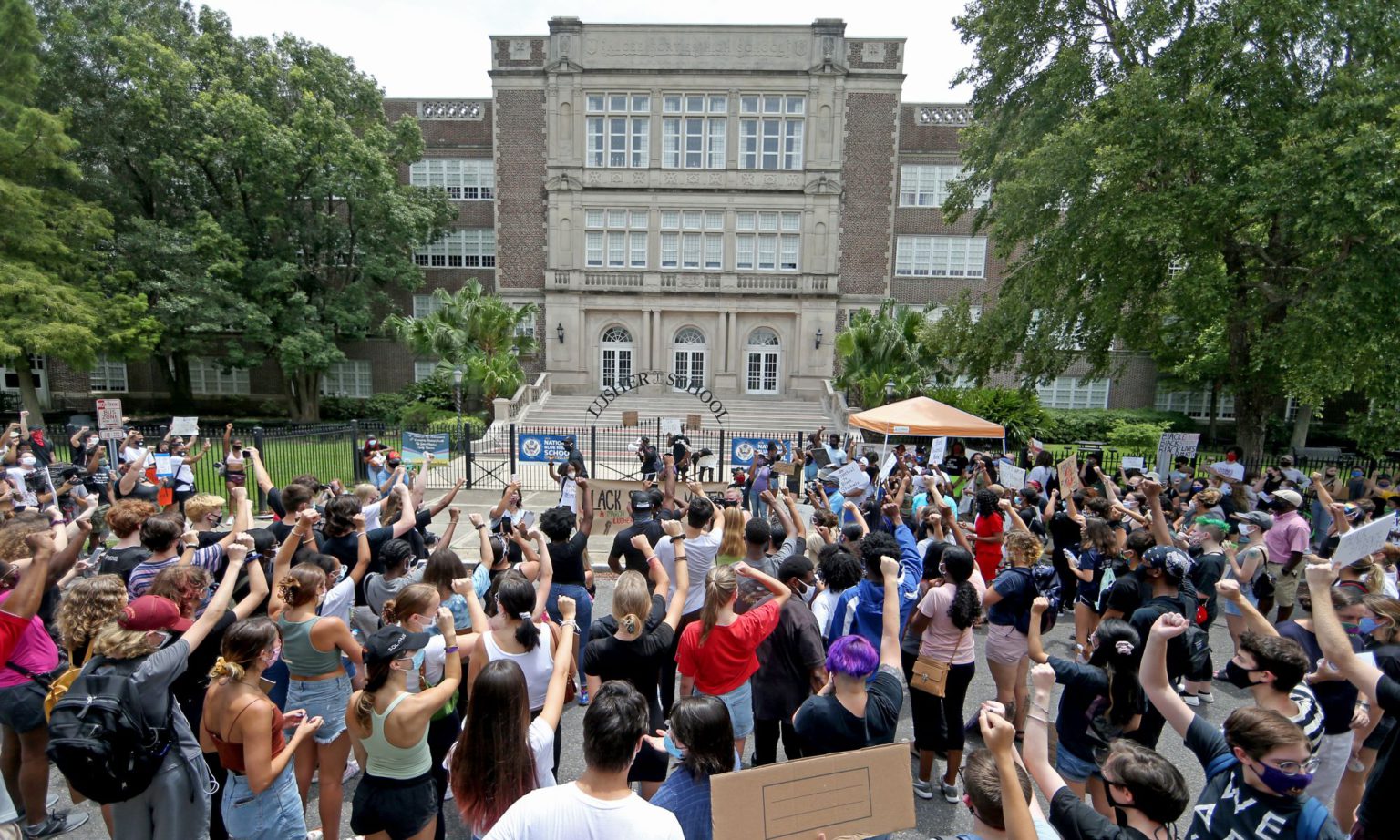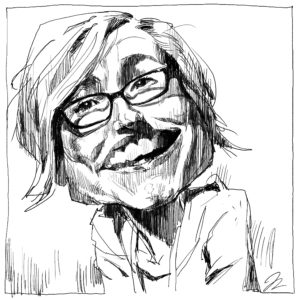
Long-read
How wokeness conquered the academy
Cynical Theories shows how postmodernism turned would-be scholars into social-justice activists.
Want to read spiked ad-free? Become a spiked supporter.
Locking down in response to coronavirus was intended to dramatically reduce social interaction. And, in this, it was successful. For weeks we only met, in person, the people we live with and, perhaps, spoke to a few colleagues, friends or extended family members through a screen. Now, months later, we see a few more people, but the continued trend for working from home means the range of people we interact with remains narrow. For many of us, the random conversations we once had with train guards, shop assistants, baristas, school-gate parents and fellow commuters have all come to an end. Likewise, although we talk to colleagues on Zoom, water-cooler gossip and snatched coffee-break chats no longer occur. We are less likely to overhear strangers talking on the bus and we no longer have to feign polite interest when a pub bore tells us exactly what he thinks about a particular issue.
In trying to make sense of Brexit, Trump and even the UK’s last General Election result, commentators worried out loud about the influence of social media. There was concern that algorithms showed people content they were already predisposed to agree with. But, more than this, there was concern that Facebook and Twitter allowed people to create communities of the likeminded, social-media bubbles that confirmed participants’ views and allowed more extreme opinions to flourish unchecked. Now, social bubbles are real, not virtual, and, rather than being a source of anxiety, we are chastised for ever wanting to leave them.
Not interacting with people outside of our immediate circle is disastrous for the social fabric of society. As the demands of Black Lives Matter protesters or transgender activists show, it increasingly seems as if some people are speaking a different language to everyone else. Words like oppression, privilege, racism, experience and identity may still be familiar, but they now mean entirely different things to different people. Phrases like ‘cis-gendered’, ‘cultural appropriation’, ‘genderfluid’ and ‘intersectional’ trip off the tongues of some, but are utterly meaningless to others. ‘Silence is violence’ is either common sense or ridiculous. Stating that there are two genders is either blindingly obvious or offensively transphobic. The existence of this language-within-a-language exposes fundamentally different ways of making sense of the world. The less we talk to each other, the more these differences crystalise.
Cynical Theories, a new book by Helen Pluckrose and James Lindsay, does a huge service in translating the language of today’s activists and explaining to readers not steeped in critical theory or postmodernism how the world looks from the perspective of those who are. They show how issues that crop up daily – the removal of statues, deleted television shows, calls for unconscious-bias training, the demand for racially segregated university accommodation – have their roots in once obscure and still impenetrable academic theories. Fortunately, unlike Foucault, Derrida, Deleuze or Butler, Pluckrose and Lindsay write with great clarity.
Cynical Theories successfully draws out how, over the course of six decades, the burgeoning popularity of critical theory within university humanities and social-science faculties shifted postmodernism from a minority academic pursuit to an all-encompassing political framework. Pluckrose and Lindsay show how what began as a reaction against grand narratives and totalising theories, which aimed to reduce everything to discourse before deconstructing and relativising it to the point of meaninglessness, began to be applied to real-world problems and, in the process, migrated off campus and emerged into the world as identity politics. They argue that the reification of the postmodern worldview creates new and indisputable ‘facts’ about race, gender and identity that can only be solved by activist scholars in pursuit of social justice.
The burgeoning popularity of critical theory within university humanities and social-science faculties turned postmodernism into an all-encompassing political worldview
Cynical Theories does more than render postmodernism comprehensible: it provides readers with a valuable analysis and a rigorous critique. Pluckrose and Lindsay identify two core principles of postmodernism: the ‘knowledge principle’ (the belief that there is no objective knowledge or Truth about the world) sits alongside the ‘political principle’ (the belief that ‘society is formed of systems of power and hierarchies’). These principles provide the foundation for four themes that run through every postmodern analysis irrespective of the specific topic: the blurring of boundaries and the rejection of binaries, for example, in relation to gender; the power of language to construct perceptions of reality, such as in advertising campaigns; a cultural relativism that forbids judgement; and the loss of the individual and the universal, perhaps most clearly illustrated in changing ideas about race.
Pluckrose and Lindsay turn this analytical framework on to some key areas of postmodern scholarship. The sections on post-colonialism and critical race theory are essential reading for anyone wanting to understand how anti-racist thinking has moved from a desire to see people judged not by the colour of their skin but by the content of their character to an insistence that not seeing skin colour is racist and segregation can be progressive. Cynical Theories shows that when power is separated from politics and the workings of institutions and is relocated in language and knowledge itself, then racism is everywhere: it exists within our unconscious mind and becomes real with our every utterance. To deny this is to demonstrate white fragility. Instead, we must educate ourselves by submitting to the superior insights of activist scholars uniquely capable of revealing white privilege.
Cynical Theories does a fantastic job of exposing some of the logical inconsistencies within postmodern scholarship and social-justice activism. Pluckrose and Lindsay point to double-binds; like telling people, ‘that if they notice race it is because they are racist, but if they don’t notice race it’s because their privilege affords them the luxury of not noticing race, which is racist’. The focus on ‘privilege’, they argue, strategically redefines ‘the absence of discrimination and disenfranchisement as unjust and problematic’. What’s more, ‘a movement claiming to problematise all sources of privilege is led by highly educated, upper-middle-class scholars and activists who are so oblivious to their status as privileged members of society’. Perhaps the biggest inconsistency of all is the fact that a movement founded upon relativism and the idea that there is no Truth comes so rapidly to the conclusion that there is ‘The Truth According to Social Justice’ and that this is a truth that cannot, under any circumstances, be questioned. As Pluckrose and Lindsay explain: ‘In the guise of Social Justice scholarship, postmodernism has become a grand, sweeping explanation for society – a metanarrative – of its own.’
Perhaps inevitably, a book of this scope cannot deal with every issue raised in detail. While Cynical Theories offers an excellent account of how postmodern scholarship morphed into social-justice activism, it is less persuasive when it comes to why this happened. Pluckrose and Lindsay explain that ‘Postmodernism first burst on to the intellectual scene in the late 1960s and quickly became wildly fashionable among leftist and left-leaning academics’. This risks making it seem as if postmodernism appeared from nowhere – and that the permissiveness of the 1960s academy is to blame for today’s problems. In fact, the intellectual roots of postmodernism stretch back much further. The Frankfurt School of social theory and critical philosophy was established in 1923 and came to be closely associated with the development of critical theory. It was closed down by the Nazis in 1933 and key members relocated to New York. Here, Max Horkheimer and Theodor Adorno wrote Dialectic of Enlightenment, one of the core texts of critical theory. They, in turn, had been influenced by scholars such as the Swiss linguist Ferdinand de Saussure whose Course in General Linguistics, published posthumously in 1916, drew attention to the arbitrary relationship between words and objects that fuelled postmodernism’s obsession with language.
By the late 1960s, many of the first generation of critical theorists, people such as Max Horkheimer (1895-1973), Theodor Adorno (1903-1969), Herbert Marcuse (1898-1979), Walter Benjamin (1892-1940) and Friedrich Pollock (1894-1970), were long retired. This older intellectual history is important to acknowledge because, without it, it can seem either that postmodernism won out because of the strength of its ideas or that it achieved success through a coordinated ‘long march through the institutions’ (although Pluckrose and Lindsay avoid this trap). In reality, even in the 1960s, radical young scholars were often pushing at an open door as an exhausted intellectual elite no longer had the confidence to defend Enlightenment values or traditional scholarly principles.
But if questions surround the postmodern takeover of universities, there are surely more questions to be asked about how and why a cultish academic fad has gained so much influence outside of the academy. To begin to answer this question we have to leave the still rarefied world of higher education behind and look instead at politics and culture in wider society. Towards the end of Cynical Theories, Pluckrose and Lindsay point to the influence of victimhood culture and the impact of ‘coddling’ parents, drawing upon recent works by Bradley Campbell, Jason Manning, Jonathan Haidt and Greg Lukianoff to explain the attraction of social-justice scholarship and activism. These are certainly insightful critiques. But a victimhood culture and the existence of cotton-wool kids are perhaps just as much symptoms of the postmodern shift as they are the cause of it.
What’s largely missing from Cynical Theories is a broader political contextualisation of social-justice activism. Just as an earlier generation of professors abandoned traditional scholarly principles, leaving the door open for critical theory, so too did the left’s abandonment of the working class leave the door open for identity politics. Pluckrose and Lindsay quite rightly point to the fact that scholars have turned into activists but they do not probe why left-wing parties that traditionally drew upon the working class for support were so happy to shift focus to this new constituency.
Cynical Theories traces the academic shifts within postmodernism. But while these intellectual developments have been taking place within universities, political changes have been occurring away from campus. Most notably, the political blows dealt to the working class throughout the 1970s and 1980s left leading activists to seek power not in mass movements but through instigating change from within state institutions, workplaces and supranational organisations. Rather than standing on picket lines, there were HR policies to be written. Rather than winning the backing of unemployed coalminers, there were European bureaucrats to persuade.
It was the left’s abandonment of the working class that left the door open for identity politics
With the working class viewed as a politically backward spent force, identity-based groups provided a ready-made new constituency for a now social justice-focused left. But it was the left’s failure and its resulting frustration with the working class that saw it retreat into universities for refuge. Disillusioned political activists found it far easier to persuade middle-class students and university lecturers of their cause – and, in turn, to take on board the outlook and concerns of this intellectual elite. It was far easier to play at identity politics than engage in class politics. Many activists are far more comfortable arguing that womanhood is a social construct than they are talking to actual women who work as cleaners or carers. Academia, and critical theory in particular, allowed political retreat to be presented as progress, and defeat as victory.
Pluckrose and Lindsay provide a vitally important pushback to postmodern thinking and the social-justice activism it has spawned. It is absolutely necessary to take up these arguments in their own terms. But ultimately, any serious challenge to today’s pernicious and divisive identity politics has to come from outside of the academy. We need new political movements that can reinvigorate democracy and better take account of the views of people who have not been schooled in postmodernism. This is not a call for patronising inclusion initiatives but rather for genuine engagement and debate that comes from the bottom up rather than from academia down. The first step is for us to get out of our lockdown social bubbles and start, once more, having those random conversations with people who do not think exactly like us.
Joanna Williams is a spiked columnist and director of the think tank, Cieo.
Cynical Theories: How Activist Scholarship Made Everything about Race, Gender, and Identity – And Why This Harms Everybody, by Helen Pluckrose and James Lindsay, is published by Pitchstone Publishing. (Order this book from Amazon(UK).)
Picture by: Getty.
Who funds spiked? You do
We are funded by you. And in this era of cancel culture and advertiser boycotts, we rely on your donations more than ever. Seventy per cent of our revenue comes from our readers’ donations – the vast majority giving just £5 per month. If you make a regular donation – of £5 a month or £50 a year – you can become a and enjoy:
–Ad-free reading
–Exclusive events
–Access to our comments section
It’s the best way to keep spiked going – and growing. Thank you!







Comments
Want to join the conversation?
Only spiked supporters and patrons, who donate regularly to us, can comment on our articles.